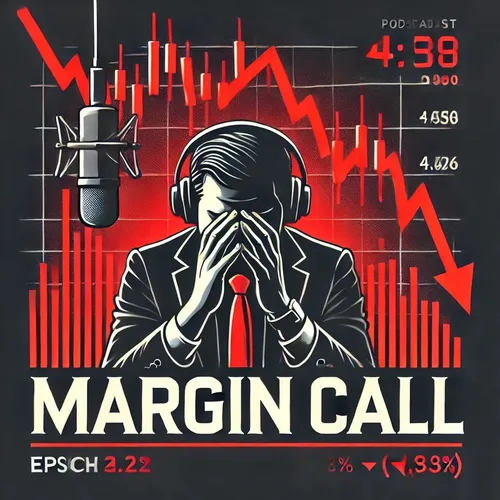Margin Calls: The Double-Edged Sword of Leverage in Financial Markets
- Author
- Quiet. Please
- Published
- Mon 21 Jul 2025
- Episode Link
- https://www.spreaker.com/episode/margin-calls-the-double-edged-sword-of-leverage-in-financial-markets--67058883
Margin calls play a critical role in financial markets, acting as both a risk management tool and a warning signal for traders using leverage. When a trader enters a position using borrowed funds—commonly referred to as trading on margin—they amplify both their potential gains and losses. The margin call occurs when the value of those positions declines enough that the trader’s equity falls below the broker's required maintenance level. At this crucial moment, the broker demands additional funds to restore the minimum margin; failing to meet this request usually leads to the automatic closure of positions. This mechanism is designed to prevent the broker from incurring losses on behalf of clients, but for a trader, a margin call often signals trouble, forcing the sale of assets at possibly unfavorable prices.
Short positions add another layer of complexity and risk to this dynamic. To “go short” means to borrow an asset—typically a stock or commodity—and sell it on the expectation that its price will fall, allowing the short-seller to buy it back later at a lower price and pocket the difference. If, instead, the price rises, the short-seller faces potentially unlimited losses. In the case of leveraged short positions, each dollar of loss can be dramatically magnified, rapidly eroding the trader's margin and greatly increasing the likelihood of a margin call.
The current environment in equity and derivatives markets demonstrates just how quickly excessive leverage and speculative short positions can destabilize not only individual accounts but entire asset classes. Recent commentary from Investing.com highlights that soaring market prices and aggressive retail speculation—especially through new products like zero-days-to-expiration options—have been pushing investors toward ever-riskier, leveraged bets. This feedback loop of rising prices begetting more leveraged purchases works well in a bullish market, but the system rapidly unwinds at the first hint of a reversal. Once prices start to drop, margin calls begin to hit, forcing traders to sell assets into a declining market, thereby accelerating losses and reducing available liquidity.
This dangerous cycle is not limited to stocks. In commodities, abrupt changes in fundamentals such as tariffs or supply shocks can squeeze short-sellers, making their positions untenable in a matter of hours. The case of copper in global commodity markets illustrates this vividly—with sudden shifts in tariffs sparking extreme price moves, triggering losses and margin calls among short positions caught on the wrong side of the trade. Commodity ETFs are similarly exposed to risks from margin maintenance and short-selling, so even sophisticated institutional players are not immune to the pressures that margin calls exert on levered positions.
Historically, markets saturated with leveraged short positions are particularly prone to periodic short squeezes, where a surge in prices forces short-sellers to abandon their trades en masse, pushing prices even higher and compounding losses. When these positions become crowded, any sudden move in prices can cause a rush of margin calls, amplifying volatility and risk for everyone exposed.
The lesson for listeners is that while margin and leverage can be powerful tools, they are double-edged swords. Effective capital management, setting clear stop-loss levels, and understanding the risk of sudden liquidity crunches are vital to surviving in markets where margin calls and troubled short positions can cascade into much larger disruptions. Thank you for tuning in, and don’t forget to subscribe. This has been a quiet please production, for more check out quiet please dot ai.
For more http://www.quietplease.ai
Get the best deals https://amzn.to/3ODvOta
